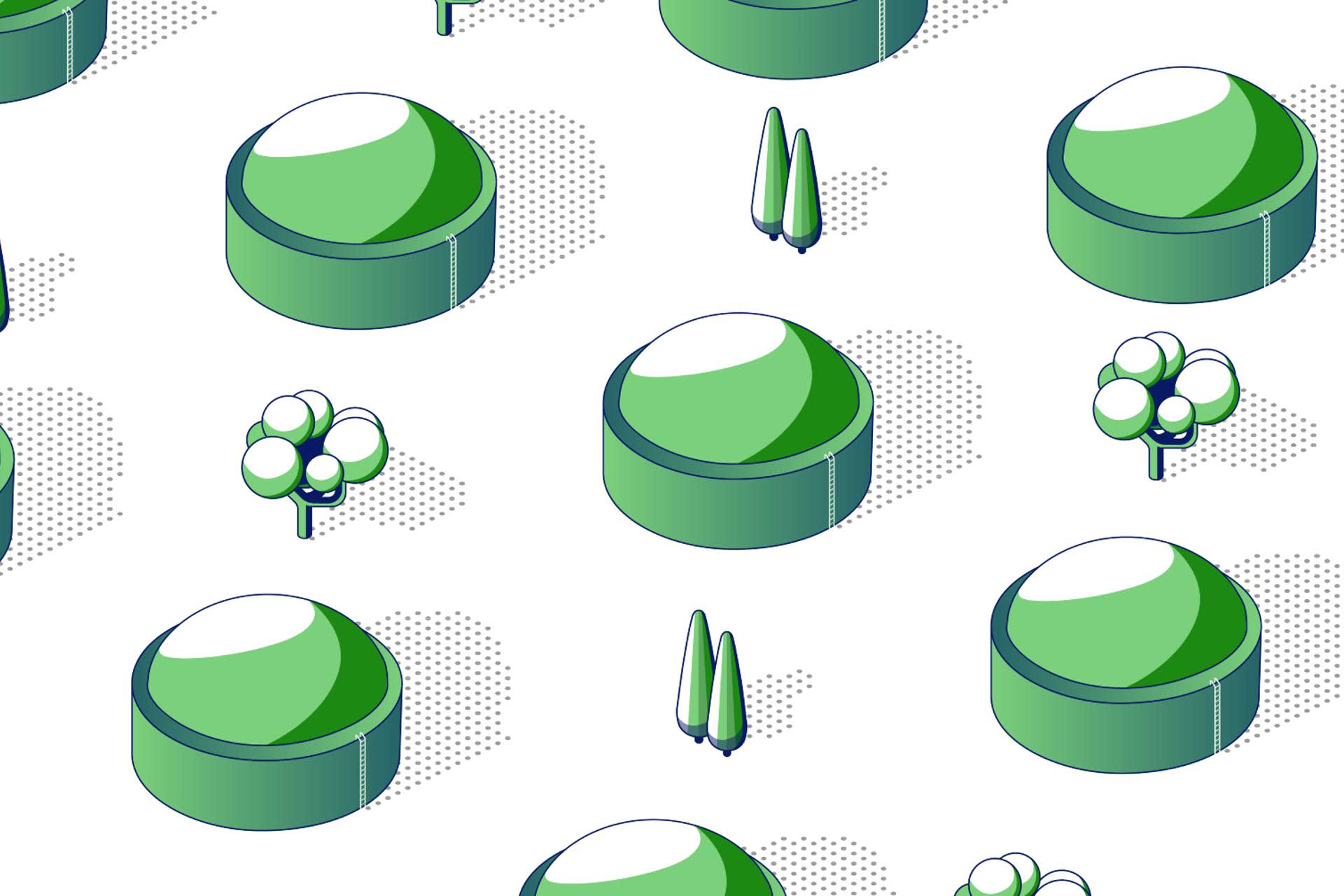Producing power: anaerobic digestion energy generation in the UK
A future featuring increasing levels of renewable energy will depend on a range of technology types that can use the UK’s natural weather, geography, and resources.
Alongside power sources like wind and solar, a stable and environmentally-friendly energy system also needs renewable alternatives without the intermittency of weather-dependant sources.
Such credentials are demonstrated by biogas, a renewable fuel produced from waste organic matter through a process known as anaerobic digestion (AD). Biogas is a well understood technology and in 2021 generated 3.5 TWh of electricity in the UK.
Biogas has the potential to play a more important role still in the country’s future energy mix.

Powering the future
Anaerobic digestion is a process through which bacteria and other naturally occurring microorganisms break down organic matter in an environment that’s free of oxygen.
Feedstock is deposited in a sealed, airtight tank known as a digester, and results in the evolution of two distinct products - a methane-rich biogas and a liquid by-product called digestate.
Suitable feedstocks for anaerobic digestion include a wide range of biodegradable waste and residues such as crop residue, livestock slurry, sewage sludge, and organic municipal waste. The choice of feedstock is a key factor in determining the size and complexity of an AD plant and ultimately the development costs.
Different feedstocks can be blended, provided conditions for the digestion process are maintained in the digester, specifically the correct temperature and microbial balance.
The biogas produced can then either be burned in a gas boiler to provide on-site heat or alternatively used as fuel in a combined heat and power (CHP) system; to generate heat and electricity.
It may also undergo what’s referred to as “upgrading”, where impurities (mainly carbon dioxide, but also other trace components) are removed from the biogas to create biomethane. This nearly pure form of methane can be used as a fuel for heat in people’s homes, or even serve as a low-carbon vehicle fuel.
The digestate (the residue from the digestion process) is also collected and commonly utilised as a fertiliser owing to its nutrient-rich properties.
Turning generators into vendors
Anaerobic digestion is a well understood and widely deployed technology, with some 650 anaerobic digestion plants thought to be in operation around the UK of all varieties – gas-to-grid and power-to-grid. Many of these are farm-based given their ability to tap into on-site feedstock such as crop residue and slurry.
Looking for a partner?
Regardless of the cost of installing and maintaining an AD plant, ensuring the best possible deal for your energy produced will be key to enhancing the plant’s profitability once operational.
The sale of surplus power is undertaken through a Power Purchase Agreement (PPA), a contract allowing your organisation to sell to a third-party buyer such as Drax.
Choosing the right PPA can be a complex decision and choosing the right energy partner is key. At Drax, we partner with more than 2,300 renewable power generators and hold relationships with as many as 60 AD operators that amount to a generating capacity of about 45 MW.
Drax has the experience and expertise to help your business navigate the electricity market and the different types of PPAs. Our skilled team is on hand to listen to what your business needs and help you achieve these aims.
For more information, and to explore options for selling your AD electricity, get in touch today.
Contact us

